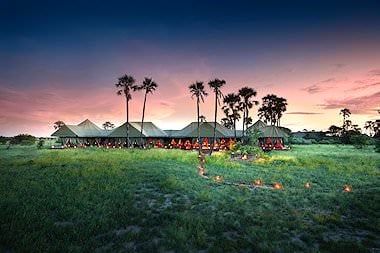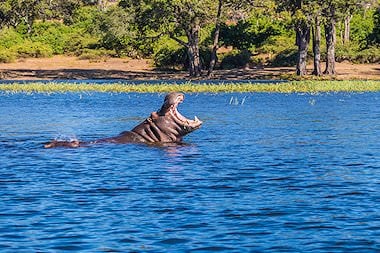Botswana’s Makgadikgadi Pans National Park
Help Me Plan- Home
- >
- African Travel
- >
- Botswana
- >
- Makgadikgadi Pans
Makgadikgadi Pans Destination Guide
On a safari that visits Makgadikgadi, visitors can enjoy special activities like quad-bike rides and meerkat encounters. Each year from November to March, rain can flood sections of the pan, attracting large numbers of animals and breeding pairs of flamingos. The pan system is one of Africa’s most famous salt flats, offering a surreal landscape of endless white horizons under vast skies.
Getting to Makgadikgadi Pans
By Air: Guests visiting Makgadikgadi are typically met at OR Tambo International Airport in Johannesburg and assisted to a cross-border flight to Maun in Botswana. From Maun, a light aircraft transfers you to the Makgadikgadi region. The airstrip depends on your chosen safari.
By Road: The Makgadikgadi system is vast—almost the size of Portugal—with multiple access points. The main road from Nata to Maun is generally the most accessible route.
Weather & Best Time to Visit
May–Oct (dry): best general wildlife viewing; clear skies; cooler nights in Jun–Aug.
Nov–Apr (wet): hot and stormy; superb birding and, in good rainfall years, dramatic water on the pans—some tracks become muddy or impassable.

The wet-season attracts flocks of waterbirds drawn to the transformation from arid salt flats to seasonal wetlands, including ducks, geese, and great white pelicans. The pan system hosts one of southern Africa’s two major greater flamingo breeding sites in suitable wet years (the other is Etosha in Namibia). Predators may be encountered when prey is abundant—black-maned Kalahari lions, as well as leopard, cheetah, and African wild dog, occur in the broader ecosystem.
Best Private Tours and Safari Packages
Experience unique stays—from Jack’s Camp set on the edge of the salt flats to remote safari regions—and the ultra-luxury of the Royal Livingstone beside Victoria Falls.
A private overland safari that travels from South Africa to northern Botswana.
A privately guided expedition from South Africa through Botswana to Victoria Falls.
Recommended Safari Camps
Several exceptional safari camps are available in and around Makgadikgadi Pans National Park.
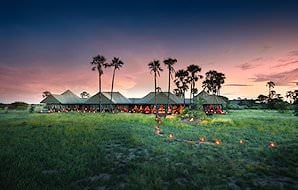
Jacks Camp
Jacks Camp offers stylish safari accommodation on the edge of one of the world's most extensive salt flats.
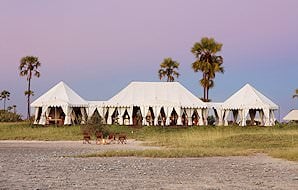
San Camp
Regarded as one of the most intimate and secluded safari camps in Africa, San Camp is in a private concession bordering Makgadikgadi National Park.
Reasons to visit the Makgadikgadi Pans
Surreal Salt Pans
Walking or driving through this expansive wilderness with an expert guide is otherworldly. The salt pans vary from small basins to vast flats that vanish at the horizon. Grasslands and striking “islands” punctuate the edges and spaces between the pans.
Bushman Trackers
Tourism supports the livelihoods of San/Basarwa communities. Tracking with a Bushman guide offers insight into traditional skills and survival in this arid environment.
Village Visit
Visiting a local village introduces customs, language, and everyday life, deepening your understanding of the people who have long called this region home.
Experiences to Savor at Makgadikgadi
Standout experiences highlight the pans’ unique character—from sweeping pink after the rain to the stark silhouette of ancient baobab on Kubu Island.
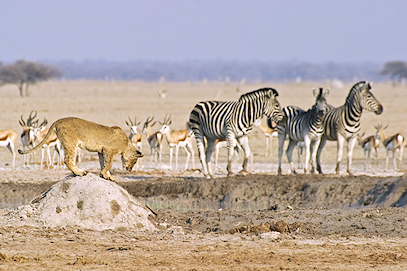
Appreciating the Natural World
Discover how specialized fauna and flora have adapted over millennia to survive in this arid expanse—an inspiring lesson in resilience.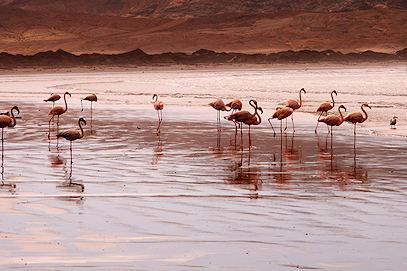
Flights of Flamingos
In high-rainfall years, large numbers of flamingos congregate on the pans—their pink plumage electrifying the austere, white landscape.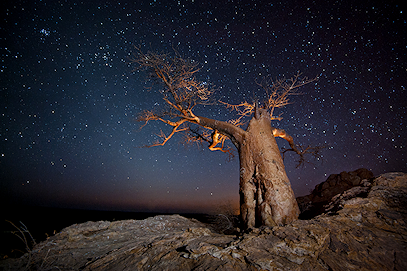
Kubu Island
Hours of apparent “nothingness” give way to Kubu’s granite outcrops and towering baobabs—an unforgettable arrival in the middle of Sua Pan.Useful Information
History
The Makgadikgadi Pans National Park was proclaimed in 1992. “Makgadikgadi” refers to a series of extensive salt pans that once formed part of ancient Lake Makgadikgadi. Archaeological evidence indicates human presence along the paleo-lake shores in prehistoric times. Historic baobabs in the wider Makgadikgadi–Nxai Pan complex—such as Baines’ Baobabs and the now-fallen Chapman’s Baobab—served as famous landmarks for explorers including David Livingstone and Frederick Courteney Selous. More recently, the Makgadikgadi featured in the 2007 “Top Gear” Botswana Special, in which presenters crossed the pans in budget two-wheel-drive cars.
Wildlife
Makgadikgadi Pans National Park has distinct wet and dry-season. From roughly November to March, seasonal water draws blue wildebeest and plains zebra toward the pans, along with antelope such as red hartebeest, kudu, springbok, eland, and gemsbok. Predators such as lions, cheetahs, leopards, and brown hyenas follow where prey congregate; elephants occur in the broader region. The greater flamingo is a spectacular wet-season visitor. During the dry months from about May to October, only desert-adapted species persist on the pan. With patience, watch for meerkat, bat-eared fox, and more rarely aardvark.
Vegetation & Terrain
The heart of Makgadikgadi consists of the vast, arid salt pans, which support extremely limited vegetation—primarily specialized algae and resilient microorganisms—though they are a vital seasonal habitat for wildlife. This flat, open terrain creates a striking, otherworldly contrast with the park's perimeter. Here, the landscape transitions sharply into extensive, arid grasslands, scattered rocky outcrops, and the iconic, massive trunks of ancient baobab trees, whose presence provides both shelter and stark visual interest against the shimmering expanse of the salt flats.
Activities
Landscape photography opportunities are vast, and game drives reveal more wildlife than the stark scenery suggest. Guided walks with San/Basarwa trackers provide insight into ecology and traditional skill. Don’t miss natural and cultural sites like Kubu Island, and consider quad-bike excursions (seasonally and with responsible operators) to cover great distances on the flat.

